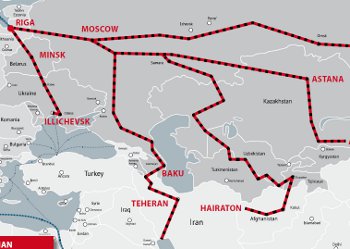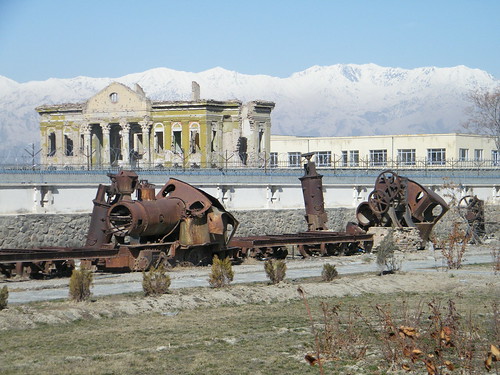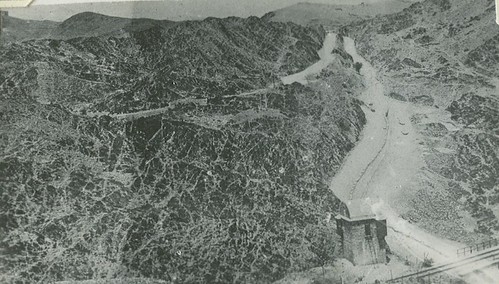The 2010-11 brochure of the Freeport of Riga Authority (“Your Reliable Partner on the Shores of the Baltic Sea”) has a page entitled The Fastest Way to Link the EU to the CIS and Asia, showing connections between the Latvian port and central Asia.
This includes a map of the route taken by trains carrying (non-lethal) supplies to Afghanistan.

A BLOCK TRAIN BETWEEN
RIGA AND HAIRATON
(AFGHANISTAN )
A dedicated block train service between
Riga and Hairaton (Afghanistan) for the
delivery of non-military goods to US troops
in Afghanistan. The train is operated by the
TransContainer company in Russia, and the
transit time is 10-11 days.
The map shows a route via Moscow, Samara, western Kazakhstan, Uzbekistan, Turkmenistan, back into Uzbekistan to what appears to be Termez, and then to Dushanbe in Tajikistan. From Dushanbe the route runs south to Afghanistan, then via Kabul to somewhere in the middle of Afghanistan, and terminates at a place which is labelled “Hairaton” but is actually about where Herat is.
Presumably if the map is correct then transport onwards from Dushanbe is by road, although I might expect that traffic for central Afghanistan would actually be transshipped at Hayratan, while that for Herat would actually go by rail to Towraghondi; maybe there are political problems with going through Turkmenistan, and these can be avoided by using the route along the Uzbek/Turkmen border on a “corridor” basis?
According to the Port Authority’s website, the Afghan traffic was due to begin in 2009:
Regular cargo transit from Riga to Afganistan to be launched
According to the Ministry of Foreign Affairs consignment goods for international forces involved into peace maintenance mission will be sent from Riga to Afghanistan in the nearest two weeks. The agreement was concluded after General Duncan McNab, the commander of the US Armed Forces Transportation Command, has visited Latvia this week. Both American and Latvian representatives specify that these cargoes will not be military ones.
It was necessary to seek for other cargo transit routes due to security situation deterioration in Pakistan. That is why certain part of goods is delivered to Afghanistan through Georgia. Riga port will be the only port in the European region. From Latvia cargo will be delivered by rail through Russia, Kazakhstan and Uzbekistan.
At present there are 500 containers at Riga port. “In the framework of his visit General McNab has visited Riga port, assessed Latvia’s participation in the process and said that everything is all right,” said high-ranking US Embassy diplomat that did not want to mention his name. The speed of transshipment of cargoes that are now in Riga will mostly depend on freight forwarding companies and countries involved into transportation chain. It is planned that several cargo trains will be sent from Riga to Afghanistan every week.
Source: Freeport of Riga Authority, 2009-05-08
A train seems to have run in February 2009, although NATO only announced a first trial shipment from Riga on 14 May 2010, arriving in Afghanistan on 9 June. There seem to various subtleties about NATO or individual countries making shipments, and lethal and non-lethal cargoes.
As well as the USA, other NATO members have sent supplies by rail via Riga. The first trains with cargos of the Great Britain, Belgium and Spain arrived already in May 14 [2010]. The cargos comprise construction materials, food. To a certain extent it is connected with safety of the cargos which is difficult to guarantee, for example, in Pakistan where a train of NATO cargos has already been attacked.


